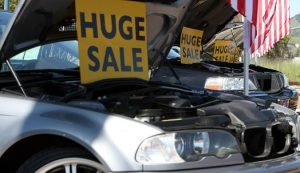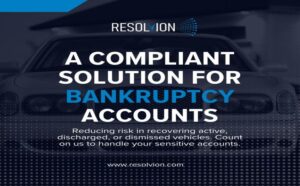 Subprime net loss rate in auto bonds rose to 9.1% in January
Subprime net loss rate in auto bonds rose to 9.1% in January
U.S. subprime auto lenders are losing money on car loans at the highest rate since the aftermath of the 2008 financial crisis as more borrowers fall behind on payments, according to S&P Global Ratings.
Losses for the loans, annualized, were 9.1 percent in January from 8.5 percent in December and 7.9 percent in the first month of last year, S&P data released on Thursday show, based on car loans bundled into bonds. The rate is the worst since January 2010 and is largely driven by worsening recoveries after borrowers default, S&P said.
Those losses are rising in part because when lenders repossess cars from defaulted borrowers and sell them, they are getting back less money. A flood of used cars has hit the market after manufacturers offered generous lease terms. Recoveries on subprime loans fell to 34.8 percent in January, the worst since early 2010, S&P data show.
With losses increasing, investors in bonds backed by car loans are demanding higher returns, as reflected by yields, on their securities. That increases borrowing costs for finance companies, with those that depend on asset-backed securities the most getting hit hardest.
American Credit Acceptance, one of nearly two dozen subprime lenders to securitize their loans in recent years, had one of the highest cost of funds last year with yields on its securitizations as high as 4.6 percent, even as the two-year swap rate benchmark hovered around 1 percent, according to a report from Wells Fargo & Co. The company relies heavily on asset-backed securities for funding. American Credit Acceptance didn’t respond to a request for comment.
S&P increased its net loan loss forecasts on Thursday for three lenders, including California Republic Bancorp., TCF Financial Corp., and First Investors Financial Services. Representatives of those firms didn’t immediately respond to messages seeking comment.
Executives at TCF, a bank holding company based in Wayzata, Minnesota, told shareholders on an earnings call in January that the bank had experienced significantly lower gains from selling its auto loans to bond investors, known as “gain on sale margins,” and warned that if its returns did not improve, it may be forced to shift funding strategies and pull back its securitization program. TCF was not immediately available for comment.
Lenders’ profits are eroding amid steep competition to win new borrowers, S&P analysts said in February.
Performance of prime credit bonds has also worsened to levels last seen in 2010. S&P blamed the weakening on “a couple of regional banks whose auto loan ABS transactions we began rating in 2014.”
Longer-term loans to finance the purchase of new and used-cars, sometimes stretched to as many as 84 months, have also hurt lender recoveries by putting borrowers underwater faster, and leaving lenders with an asset worth far less after repossession.
In January, 5.09 percent of subprime car loans were at least 60 days delinquent, up from 5.06 percent in December, S&P said. In January 2016, the figure was 4.66 percent.
Source: Bloomberg.com










Facebook Comments